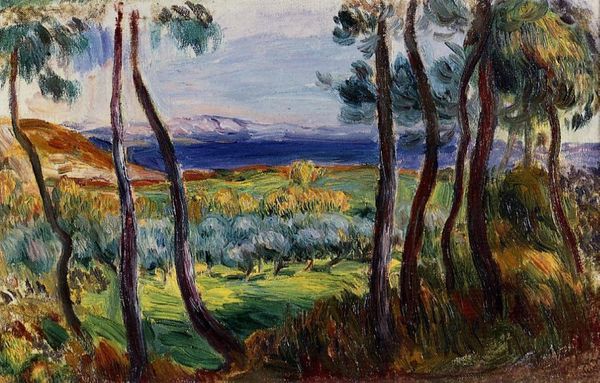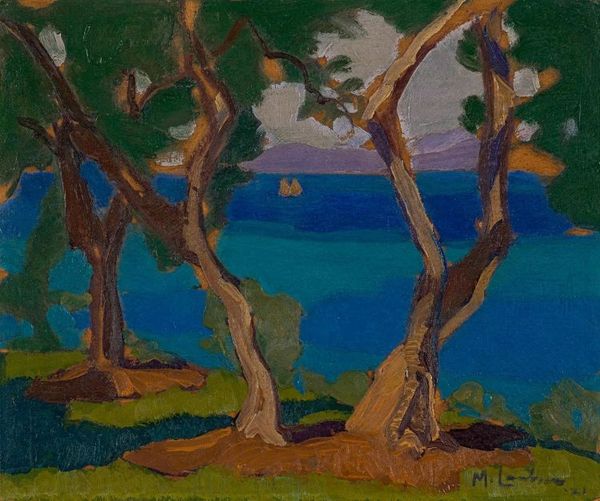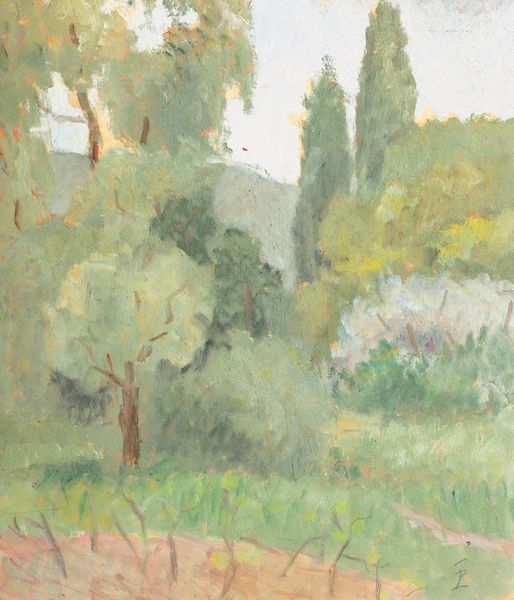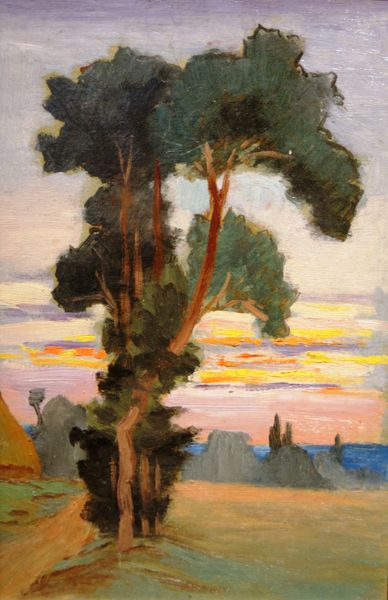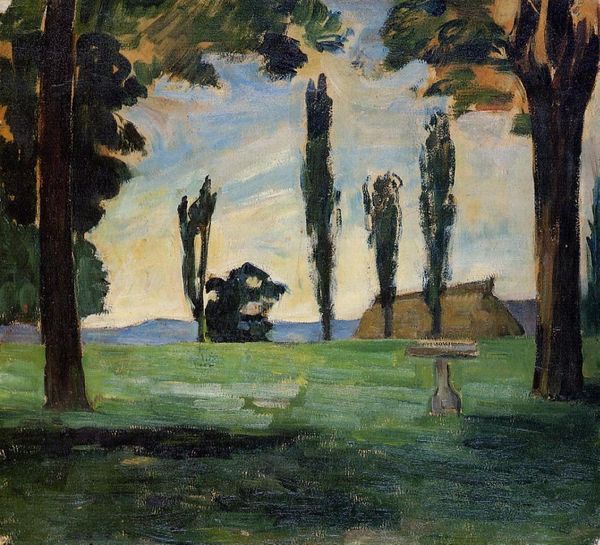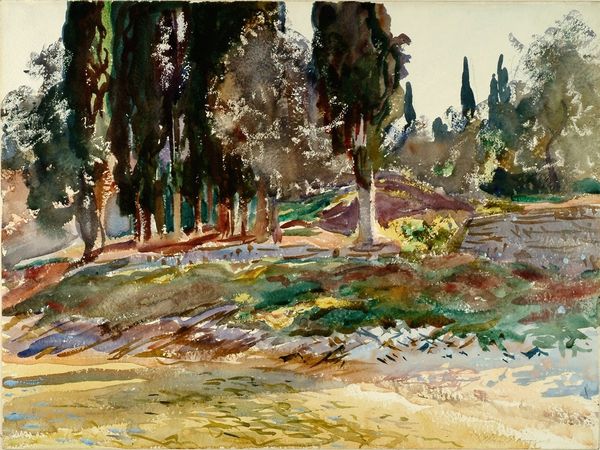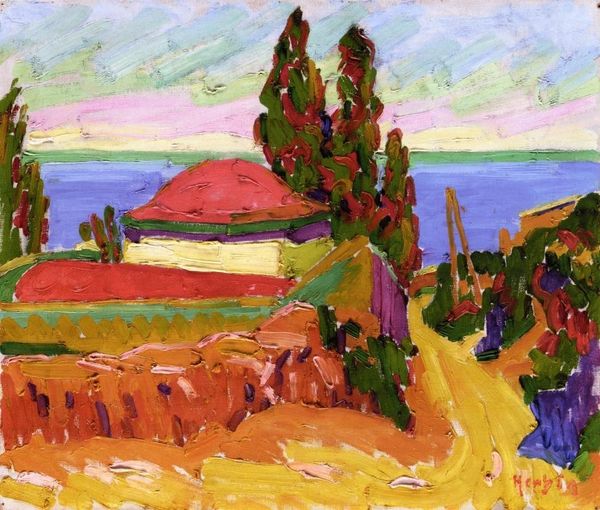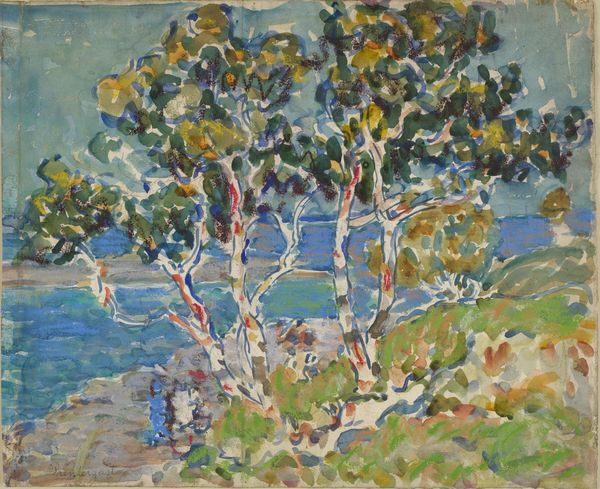
Cypress Trees at San Vigilio 1913
0:00
0:00
johnsingersargent
Addison Gallery of American Art (Phillips Academy), Andover, MA, US
Dimensions: 71.75 x 92.07 cm
Copyright: Public domain
Curator: John Singer Sargent painted this intriguing view of "Cypress Trees at San Vigilio" in 1913. He rendered it en plein air, using oil on canvas. Editor: The overwhelming first impression is somber; it feels muted and monumental, especially with those dominating verticals. Are we looking at markers of a graveyard, maybe? Curator: In the visual language of Sargent's time, cypress trees had been long associated with mourning, but more often with a sense of permanence. The scene almost serves as a memory anchor. Editor: So it is the monumentality of enduring memory rather than immediate loss. Even the application is intriguing—so much mass and volume reduced to swift, decisive brushstrokes. Look at how those greys in the backdrop give shape to the water, but it’s the looming black trees that contain it. Curator: These towering trees, dark against the soft light of the sky, feel archetypal; the rock edges echo that sense of grounding. Cypress trees do signify something deep. For the ancient Greeks and Romans, they symbolized not only grief, but also immortality— the enduring soul. Editor: The vertical thrust is undeniably strong. Is he using that compositional choice to pull the sky and earth into closer relation? In some sense, it almost looks like abstraction! Curator: Precisely. While rooted in Impressionism, Sargent edges toward simplification. It shows his deep understanding of form—using it to highlight those eternal elements present in memory. The painting's composition itself mirrors this push to emphasize lasting impact by isolating form from any clear narrative, right? Editor: Yes, and notice also the strategic use of negative space—the subtle blues, grays, and gold that frame the silhouettes. A masterful orchestration of dark against light! It does make the shapes resonate more. It feels like a distillation, like paring back to reveal just what lingers. Curator: This all has helped me consider those austere verticals anew. The painting becomes not just a picture, but a container for what remains in us through landscape—what it represents about our own continuities and recollections. Editor: For me, I understand better how Sargent moved beyond surface rendering to probe more profound formal relationships that mirror what remains and endures. A fascinating interplay.
Comments
No comments
Be the first to comment and join the conversation on the ultimate creative platform.

